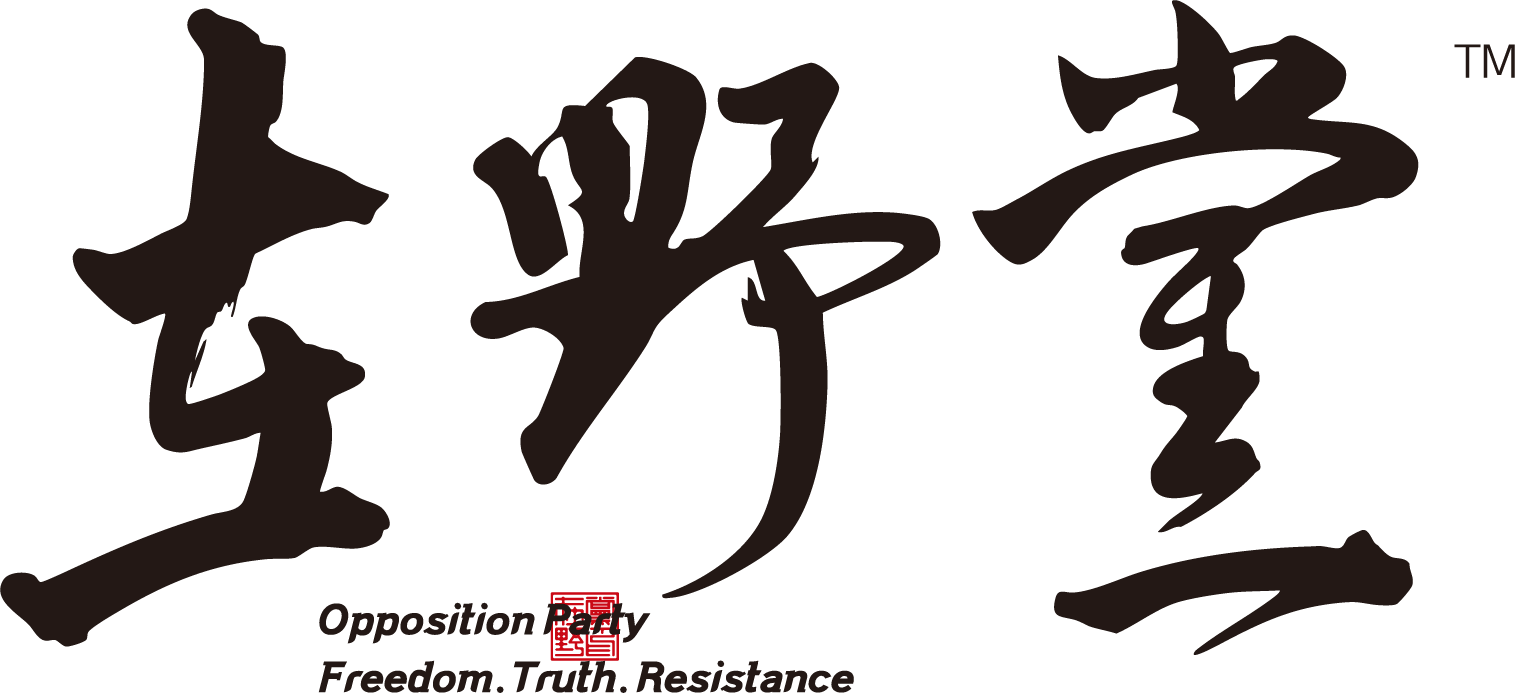(宪法第五条:国旗、国歌、国徽与货币的象征和意义)
作者:何清风
编辑:冯仍 责任编辑:罗志飞 翻译:吕峰
我们励志要建立的中华民族联邦共和国作为一个以普世价值和民族文化复兴为目标的理想国度,其国家象征体系承载了深厚的文化底蕴和时代精神。从国旗“红地国土自由花”,到国歌《中华联邦颂》,国徽“金盾龙凤大好河山”,以及官方语言、文字和多元化的货币体系,这些元素共同勾勒出联邦共和国的独特形象和国家意志。本文将围绕这些国家象征,深入探讨其设计理念、文化内涵以及未来对联邦共和国的意义,展现其作为人类文明灯塔的宏伟愿景。

一、国旗:红地国土自由花
联邦共和国的国旗被命名为“红地国土自由花”,这一设计融合了中华传统文化与现代自由理念。“红地国土” 象征着中华民族的热情与活力,红色在当前的中华文化中普遍代表吉祥、繁荣和团结。“自由花”是国旗的核心图案,象征着联邦共和国对自由的追求和对国土的热爱。花朵的绽放象征着自由的盛开,表达了联邦共和国公民在自由土壤中追求幸福与发展的愿景。国旗的设计简洁而富有深意,既扎根于传统,又面向未来,成为联邦共和国团结公民,激励为自由奋斗的象征。

二、国歌:《中华联邦颂》
《中华联邦颂》作为联邦共和国的国歌,是精神与理念的音乐表达,改编自《中华民国颂》。这首国歌以其激昂的旋律和深情的歌词,凝聚了联邦共和国公民对国家、民族和未来的热爱。国歌的歌词融入了地域、先贤等元素,象征着我们这个新生的联邦制国家,在疆域与文化上的传承。《中华联邦颂》的歌词围绕着地域、文化、先贤、国家等主题,歌颂联邦共和国的壮丽河山和文化传承的精神。国歌不仅是国家身份的象征,更是联邦共和国公民的精神纽带。

三、国徽:金盾龙凤大好河山
联邦共和国的国徽“金盾龙凤大好河山”以其恢弘的设计,展现了国家的历史传承与未来愿景。金盾作为国徽的核心元素,象征着联邦共和国的坚不可摧和对公民安全的承诺。金色代表繁荣与尊贵,盾牌则寓意保护与正义,体现国家对公民权利的保障和对和平的维护。龙与凤是中华文化中重要的图腾,分别象征着力量与智慧,寓意千千万万中华儿女在联邦共和国的保护下,安居乐业、繁衍生息。在国徽中,龙凤共存,也寓意联邦共和国兼具刚强与柔美的特质,追求力量与智慧的平衡,与中国传统文化当中的阴阳两仪相得益彰。大好河山则描绘了联邦共和国的壮丽自然景观,从巍峨的山脉青藏高原到奔腾的长江黄河,象征着国家的辽阔疆域和丰富资源。
四、语言与文字:汉语普通话与正体字
联邦共和国将汉语普通话定为官方语言,汉语正体字为官方文字,这一选择既继承了中华文化传统,也是对现代国家治理的适应。汉语普通话作为全国通用的语言,打破了地域和方言的隔阂,促进了民族团结与文化交流。在联邦共和国的学校、媒体和公共服务中,汉语普通话的使用确保了信息的畅通和公民的平等参与。正体字作为官方文字,承载了中华文化的深厚底蕴。与简体字相比,正体字保留了汉字的传统形态,体现了汉字的艺术美感和历史延续性。在联邦共和国,正体字不仅用于官方文件和教育,也广泛应用于文化艺术领域,如书法、文学和传统工艺。政府通过推广正体字教育,培养公民对传统文化的认同感,同时也向世界展示中华文化的独特魅力。联邦共和国在推广官方语言和文字的同时,也尊重少数民族语言和文字的多样性。在多民族聚居的地区,地方语言和文字同样受到保护和支持,体现了联邦共和国对文化包容的承诺。同时,我们也应该成立专业的语言文字专家团队,对正体字进行适当的改革,以适应社会的发展,方便人们学习使用。
五、货币体系:纸质五民币、数字五民币与黄金五民币
联邦共和国的货币体系独具特色,包含纸质五民币、数字五民币两种形式,展现了其在经济领域的创新与传统并重的理念。纸质五民币是联邦共和国的法定纸质货币,设计上可能融入了中华文化元素,如国旗的自由花、龙凤图案或大好河山的意象。纸质五民币不仅是交易工具,更是国家形象的载体。每一张货币上都可能印有联邦共和国的历史人物、名胜古迹或文化符号,激励公民铭记历史、展望未来。纸质五民币的流通保障了实体经济的需求,特别是在偏远地区和小额交易中发挥了重要作用。
数字五民币代表了联邦共和国在数字化经济领域的探索,作为法定数字货币,通过区块链等技术实现安全、高效、透明的交易。它的推广不仅便利了公民的日常生活,也推动了电子商务和数字金融的发展。更是向集权统治发起了最致命、最根本的打击———让货币发行不再是政府垄断。数字五民币的使用体现了联邦共和国对科技创新的重视,同时也为全球数字经济的发展提供了范例———建立国家主权型区块链。
六、象征体系的深远意义
联邦共和国的国旗、国歌、国徽、语言文字和货币体系共同构成了其国家形象的核心。这些象征不仅服务于国内的民族团结和文化传承,也在国际舞台上展现了联邦共和国的独特魅力和全球责任。在将来,这些符号将象征并激励着公民为自由、民主和繁荣而奋斗。国旗的红地自由花、国歌的激昂旋律、国徽的壮丽河山,以及语言文字和货币的广泛使用,共同塑造了联邦共和国公民的国家认同感,我们期待这一天的到来,这一天也终将到来!
七、未来展望:灯塔的光芒
中华民族联邦共和国以其独特的象征体系,向世界展示了一个融合传统与现代、扎根本土与面向全球的国家形象。红地国土自由花的国旗高高飘扬,《中华联邦颂》的旋律响彻云霄,金盾龙凤大好河山的国徽熠熠生辉,汉语普通话与正体字传承文化,五民币的货币体系引领经济未来。这些象征不仅是联邦共和国的标志,更是其国家意志的体现。展望未来,联邦共和国将以这些象征为指引,致力于构建一个自由、民主、正义、平等的社会。致力于成为人类的灯塔,联邦共和国以其开放包容的姿态,广邀追求普世价值与自由民主的同胞们的加入,最终,我们的力量汇聚成为一把尖刀,插入共产党的心脏,终结这一十恶不赦的政权。中华民族联邦共和国———中国的未来
On the Future of Chinese Democracy: A Detailed Explanation of the
“Five-People Constitution”
Part VII
(Article Five of the Constitution: The Symbols and Significance of the National Flag, National Anthem, National Emblem, and Currency)
Abstract:This article expounds on the national symbol system of the Federal Republic of the Chinese Nation, including the national flag, “The Free Blossom on the Red Land,” the national anthem Ode to the Chinese Federation, the national emblem, “Golden Shield with Dragon and Phoenix Over Magnificent Rivers and Mountains,” the official language and traditional script, as well as the monetary system consisting of paper, digital, and gold “Five-People Currency.” The article explores the design concepts and cultural connotations of these symbols, emphasizing their role in consolidating national identity, carrying forward Chinese culture, and embodying the values of freedom and democracy. It also envisions that guided by these symbols, China will ultimately end autocracy and build a free and democratic future.
Author: He Qingfeng
Editor: Feng Reng
Responsible Editor: Luo Zhifei
Translator: Lyu Feng

The national flag of the Federation is named The Free Blossom on the Red Land. Its design integrates traditional Chinese culture with modern ideals of liberty. “Red Land” symbolizes the passion and vitality of the Chinese nation; red in Chinese culture often represents auspiciousness, prosperity, and unity. The “Free Blossom” is the core emblem, signifying the Republic’s pursuit of liberty and love for its homeland. The blossoming flower represents the flourishing of freedom, expressing the citizens’ aspiration to pursue happiness and development on free soil. Simple yet profound, the flag is both rooted in tradition and oriented toward the future, serving as a symbol that unites citizens and inspires the struggle for freedom.

II. National Anthem: Ode to the Chinese Federation
Ode to the Chinese Federation, the anthem of the Republic, is the musical expression of its spirit and ideals, adapted from Ode to the Republic of China. With stirring melody and heartfelt lyrics, it embodies citizens’ love for the nation, people, and future. Its lyrics incorporate references to regions and sages, symbolizing the inheritance of territory and culture by this new federal state. The anthem praises the grandeur of the Federation’s land and the spirit of cultural continuity. More than a national symbol, it serves as the spiritual bond linking all citizens of the Republic.

III. National Emblem: Golden Shield with Dragon and Phoenix Over Magnificent Rivers and Mountains
The national emblem, Golden Shield with Dragon and Phoenix Over Magnificent Rivers and Mountains, presents a majestic vision of history and destiny. At its core lies a golden shield, symbolizing the Republic’s indestructibility and commitment to protecting its citizens. Gold represents prosperity and dignity, while the shield signifies justice and protection, embodying the safeguarding of civil rights and peace. The dragon and phoenix, iconic Chinese cultural totems, represent strength and wisdom, implying that countless Chinese people under the Federation’s protection may live in peace and thrive. Their coexistence symbolizes the balance of strength and grace, akin to the harmony of yin and yang in Chinese tradition. The emblem also features landscapes of mountains, plateaus, and great rivers such as the Yangtze and Yellow River, symbolizing the vast territory and abundant resources of the Republic.
IV. Language and Script: Mandarin Chinese and Traditional Characters
Mandarin Chinese is established as the official language, and traditional Chinese characters as the official script—an inheritance of cultural tradition while adapting to modern governance. Mandarin breaks down regional and dialectal barriers, promoting national unity and communication. Its use across schools, media, and public services ensures both accessibility and equal participation for citizens.
Traditional characters preserve the historic form and artistic beauty of the Chinese script. Compared to simplified characters, they better embody cultural depth and continuity. In the Federation, traditional characters are used in official documents, education, and cultural domains such as calligraphy and literature. By promoting education in traditional characters, the government fosters cultural identity while showcasing Chinese cultural uniqueness globally. At the same time, minority languages and scripts are respected and protected, embodying the Republic’s commitment to inclusiveness. A team of language experts will be established to appropriately reform traditional characters to meet contemporary needs and facilitate learning.
V. Monetary System: Paper, Digital, and Gold “Five-People Currency”
The Republic’s monetary system is distinctive, comprising paper, digital, and gold-backed “Five-People Currency.”
Paper Currency: As the official legal tender, its design incorporates cultural motifs such as the Free Blossom, dragons and phoenixes, and scenic landscapes. Beyond its transactional function, paper currency embodies national identity, featuring historical figures, landmarks, and cultural symbols that inspire citizens to honor the past and embrace the future. It plays a vital role in supporting the real economy, especially in remote areas and small-scale trade.
Digital Currency: Representing innovation, the digital Five-People Currency leverages blockchain and related technologies to ensure secure, efficient, and transparent transactions. Its adoption facilitates daily life, strengthens e-commerce and digital finance, and delivers a decisive blow against authoritarian control by ending state monopoly over currency issuance. It reflects the Republic’s commitment to technological advancement and provides a model for a sovereign blockchain in the global digital economy.
Gold Currency: Serving as a store of value and a guarantee of stability, the gold-backed version of the Five-People Currency symbolizes trustworthiness and anchors the financial system against risks.
VI. The Profound Significance of the Symbol System
Together, the flag, anthem, emblem, language, and monetary system form the core of national identity. Domestically, they promote unity and cultural inheritance; internationally, they showcase the Federation’s unique charm and global responsibility. These symbols inspire citizens to strive for freedom, democracy, and prosperity. The red Free Blossom, the anthem’s soaring melody, the emblem’s majestic rivers and mountains, and the widespread use of language and currency jointly shape a collective sense of belonging. The arrival of this day is inevitable.
VII. Future Vision: The Light of a Beacon
Through its unique system of symbols, the Federal Republic of the Chinese Nation presents to the world a vision that fuses tradition with modernity, rooted in the homeland yet open to the globe. The Free Blossom on the Red Land flutters proudly, the melody of Ode to the Chinese Federation resounds across the sky, the Golden Shield with Dragon and Phoenix shines brilliantly, Mandarin and traditional characters carry cultural legacy, and the Five-People Currency leads economic innovation.
These are not mere signs but embodiments of the Republic’s will. Looking forward, the Federation will be guided by them in building a free, democratic, just, and equal society. With openness and inclusiveness, it will invite all who share universal values and the pursuit of liberty to join. Ultimately, our strength will unite into a sharp blade, piercing the heart of the Communist regime and bringing it to an end.
The Federal Republic of the Chinese Nation—the future of China.

-rId6-1267X950.jpeg?w=218&resize=218,150&ssl=1)


-rId2-1280X960.jpeg?w=218&resize=218,150&ssl=1)


